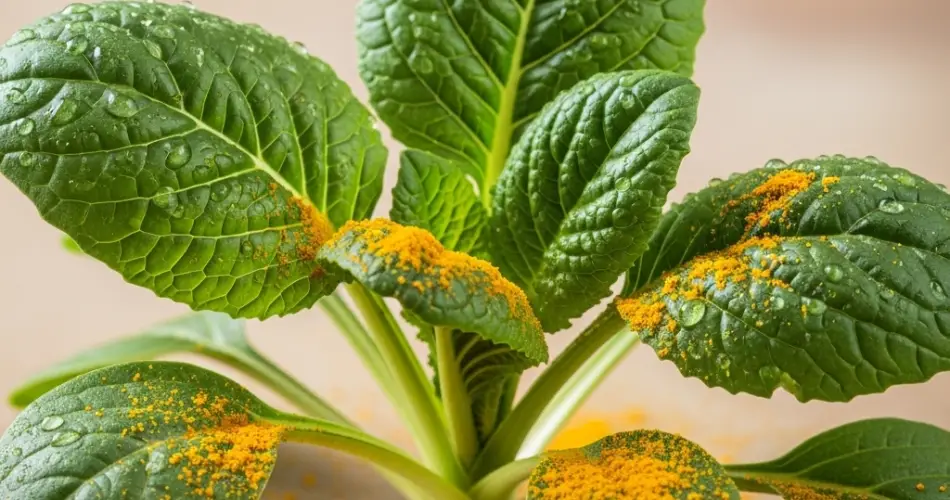When it comes to nurturing healthy plants and building fertile soil, nature offers an abundance of simple, powerful resources. One surprisingly effective natural ingredient for the garden is turmeric—a common kitchen spice best known for its bright color and use in culinary and medicinal traditions. But beyond the kitchen, turmeric can also serve as a potent, 100% natural soil enhancer and plant protector.
If you’re looking for an organic and sustainable way to improve soil health, promote plant growth, and ward off pests and diseases, turmeric could become one of your garden’s best-kept secrets. Just one tablespoon added to your garden routine can make a significant difference—here’s how and why it works.
What Makes Turmeric So Powerful?
Turmeric is derived from the rhizome (root) of the Curcuma longa plant and is rich in curcumin, an active compound with strong antibacterial, antifungal, and anti-inflammatory properties. In the soil and around plants, turmeric helps suppress harmful microbes, improve immunity in plants, and protect roots from diseases.
Unlike chemical fertilizers or synthetic pesticides, turmeric is completely natural and biodegradable. It not only enhances plant health but also contributes to the long-term balance of the soil ecosystem.
Benefits of Using Turmeric in the Garden
1. Natural Antifungal and Antibacterial Agent
Soil-borne fungi and bacteria can harm plant roots, stunt growth, and reduce yields. Turmeric contains compounds that suppress these harmful microbes without disrupting the beneficial microorganisms that help plants thrive.
2. Soil Enrichment
Turmeric contributes organic matter and trace nutrients to the soil. When combined with compost or added directly to the soil, it supports a healthier microbial environment, which improves nutrient cycling and soil fertility.
3. Pest Deterrent
Turmeric’s strong aroma and bioactive compounds help deter common garden pests like ants, aphids, and soil-dwelling larvae. Sprinkling turmeric around the base of plants can act as a natural protective barrier.
4. Wound Healer for Plants
If a plant stem or root has been damaged during transplanting or pruning, a small amount of turmeric powder can be applied to the cut area to prevent infection and promote faster healing.
5. Mold and Mildew Control
Fungal infections such as powdery mildew can spread rapidly in humid environments. A turmeric spray solution can be used as a preventive measure or treatment, reducing the spread of infection naturally.
How to Use Turmeric in the Garden
1. As a Soil Additive
To enrich soil naturally, mix 1 tablespoon of turmeric powder into the soil around the base of each plant. Gently water it in so that the turmeric penetrates the upper soil layer. This can be repeated every two to three weeks during the growing season.
2. For Pest Control
Sprinkle turmeric powder in a thin ring around the base of plants to deter insects and crawling pests. Reapply after heavy rain or watering.
3. For Root Rot and Fungal Problems
If a plant shows signs of root rot or fungal infection (such as browning roots or black spots on leaves), remove the affected parts and dust the remaining healthy areas with turmeric powder before replanting. This creates a natural antiseptic barrier.
4. As a Foliar Spray
Mix 1 tablespoon of turmeric powder with 1 liter of warm water. Let it sit for 20 minutes, then strain and pour the solution into a spray bottle. Use it to spray leaves and stems every 10–14 days to help prevent mildew and boost plant immunity.
Ideal Plants for Turmeric Treatment
Turmeric is gentle enough to be used around a wide variety of plants, including:
-
Tomatoes
-
Peppers
-
Cucumbers
-
Beans
-
Leafy greens
-
Ornamental flowers
-
Indoor plants
Avoid overuse, as excessive amounts can cause temporary yellowing in sensitive plants. A little goes a long way.
Additional Tips
-
Always use pure turmeric powder—not curry powder or spice blends, which may contain salt or additives harmful to plants.
-
Turmeric works best when combined with other organic practices such as composting, mulching, and proper crop rotation.
-
Store turmeric in a cool, dry place to maintain its potency for garden use.
Why Choose Natural Solutions Like Turmeric?
Chemical pesticides and fertilizers may offer quick results but often come at a cost—both to the environment and to the long-term health of your garden soil. Turmeric, on the other hand, is safe, sustainable, and effective, especially when used as part of a balanced, organic gardening routine.
By adopting natural soil boosters like turmeric, you support biodiversity, reduce harmful runoff, and create a healthier garden ecosystem. Your plants will thank you with stronger growth, fewer pests, and more abundant harvests.
Final Thoughts
One tablespoon of turmeric may seem small, but it holds remarkable power when it comes to enriching your soil and protecting your plants. Whether you’re an experienced gardener or just starting out, incorporating turmeric into your garden routine is a simple, cost-effective way to harness the benefits of nature.
Next time you reach for spices in the kitchen, consider setting some turmeric aside for your plants—it’s a garden remedy worth keeping in your toolkit.



